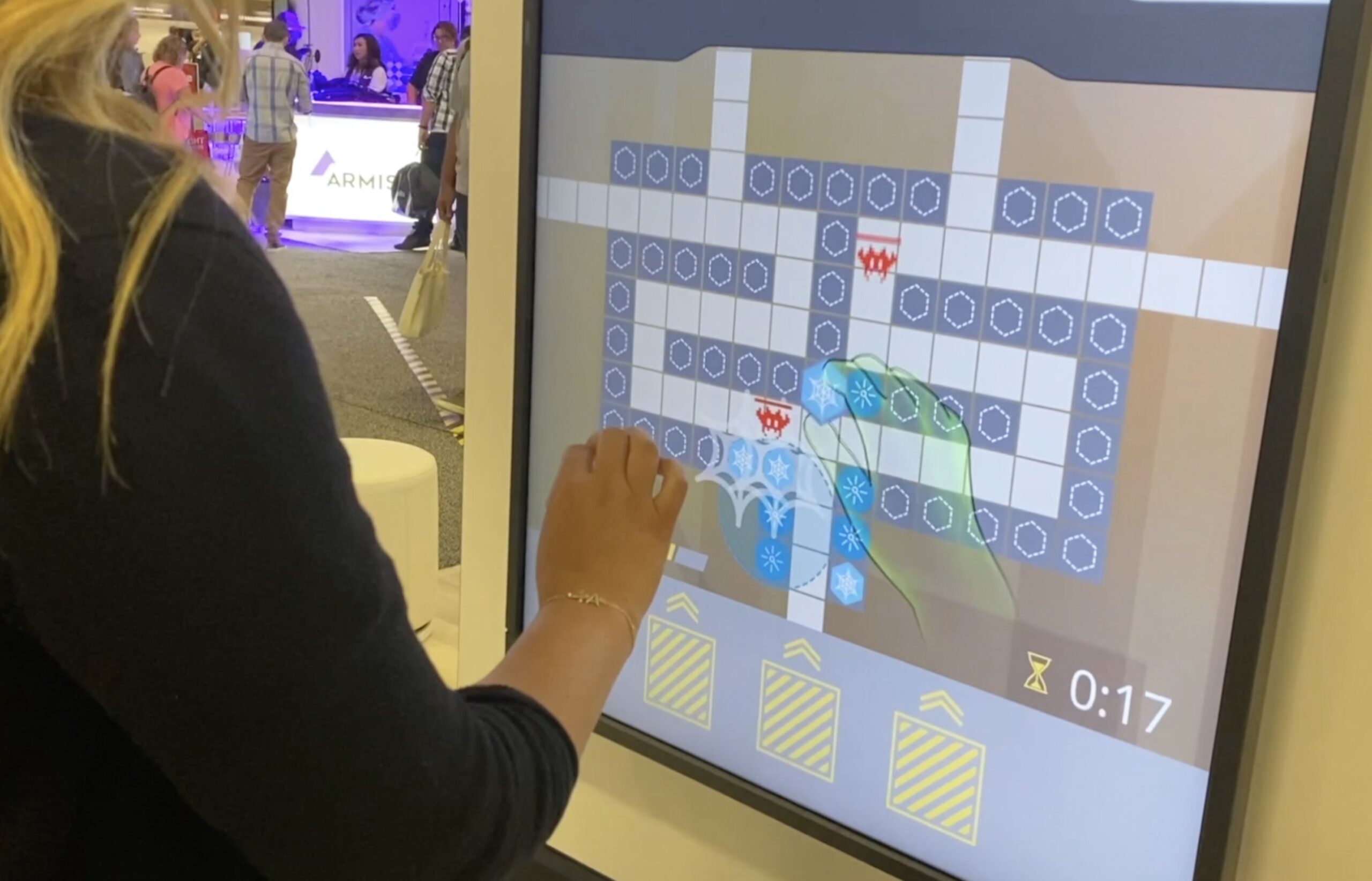
Interactive wall projection is a cutting-edge technology that transforms ordinary surfaces into engaging, interactive displays. This innovation combines advanced projection systems with touch or motion-sensing technology to create immersive experiences for users.
The technology uses a high-resolution projector to display digital content onto a custom built display piece or any flat surface. These projectors can display vibrant images, videos, and interactive elements with great clarity. To make the wall interactive, the system uses sensors or cameras to detect user interactions, such as touch, gestures, or even movements. These sensors track the position and movement of hands or other objects in real time, allowing users to engage with the projected content.
The heart of the system lies in the software. Advanced algorithms process input from sensors and cameras, translating user actions into commands that manipulate the projected content. This software can create a wide range of interactive experiences, from simple touch responses to educational applications and complex games.
The design of the user interface (UI) plays a critical role in the effectiveness of interactive wall technology projections. A well-designed UI provides interactions that are intuitive and engaging, enhancing the overall user experience.
Interactive wall technology is used in various settings, including education, retail, entertainment, and corporate environments. It provides a dynamic and engaging way to present information, conduct interactive lessons, entertain audiences, and collaborate.
What Is A Digital Wall?
A digital wall, or interactive wall projection, is a surface that displays digital content and allows for interactive audience engagement. Digital walls can take various forms, from large-scale LED displays to projection-based systems. They are characterized by their ability to present dynamic content and respond to user interactions.
Many digital walls incorporate interactive features that enhance user engagement. These can include touch screens, motion sensors, and even augmented reality (AR). Interactive digital walls are particularly popular in retail environments, museums, and public spaces with an immersive experience. In corporate settings, digital walls serve as dynamic presentation tools and collaborative workspaces. In education, they enhance learning by making content interactive and visually appealing. In retail, they attract customers and provide interactive product information.
The main advantage of digital walls is their ability to captivate and engage audiences. They offer a visually striking way to present information and create memorable moments. Digital walls are highly customizable. They allow for tailored content that meets the specific needs of the customer.




